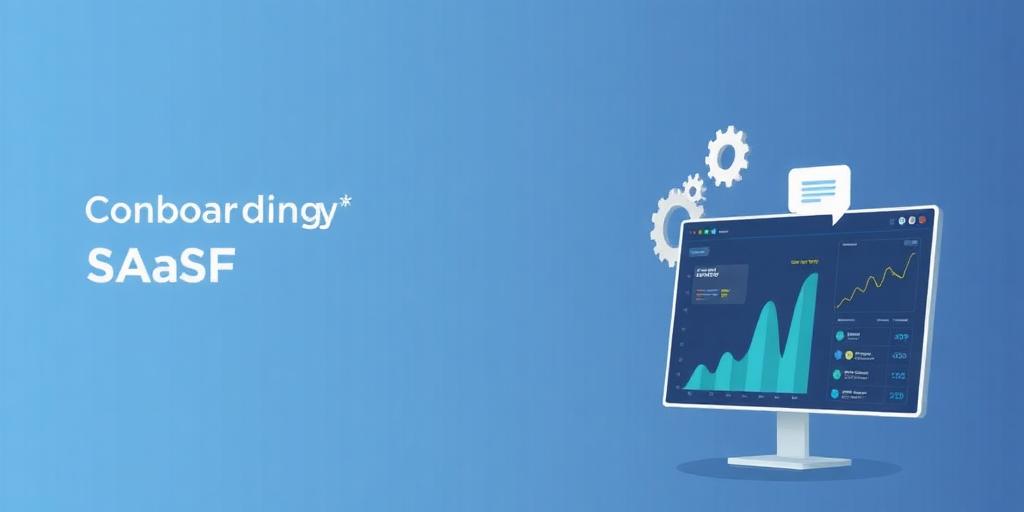Why Your SaaS Onboarding Flow is Failing (And How to Fix It)
SaaS onboarding is the critical process that transforms new users into active, engaged customers. A smooth onboarding experience directly correlates with higher retention rates and increased customer lifetime value. However, many SaaS companies struggle with onboarding flows that are confusing, incomplete, or simply ineffective. Let's break down why your SaaS onboarding might be failing and, more importantly, how to fix it.
1. Lack of Clear Value Proposition
The Problem: Users need to quickly understand the core value your SaaS provides. If the value proposition isn't immediately apparent, users are likely to abandon the platform.
The Fix:
- Highlight Key Benefits: Clearly articulate the main benefits within the first few seconds of the onboarding experience. Use concise language and visuals to showcase how your SaaS solves specific problems.
- Focus on 'Aha!' Moments: Design the initial user journey to lead users to an 'aha!' moment as quickly as possible. This is the point where they experience the core value firsthand.
2. Overwhelming Complexity
The Problem: Too many features, options, or steps can overwhelm new users, leading to frustration and abandonment.
The Fix:
- Simplify the Initial Experience: Focus on essential features and tasks during the initial onboarding. Gradually introduce more advanced functionalities as users become more comfortable.
- Progressive Disclosure: Reveal features as needed, rather than presenting everything at once. This helps users learn at their own pace and reduces cognitive overload.
- Interactive Tutorials: Guide users through key tasks with interactive tutorials that provide step-by-step instructions and real-time feedback.
3. Poor User Interface (UI) and User Experience (UX)
The Problem: A confusing or clunky UI/UX can make it difficult for users to navigate the platform and complete essential tasks.
The Fix:
- Intuitive Design: Ensure that the UI is intuitive and easy to navigate. Use clear labels, consistent design patterns, and logical information architecture.
- Mobile Optimization: With an increasing number of users accessing SaaS platforms on mobile devices, it's crucial to optimize the onboarding experience for mobile.
- User Feedback: Collect user feedback regularly and use it to identify areas for improvement in the UI/UX.
4. Inadequate Support and Guidance
The Problem: Users may encounter roadblocks or have questions during onboarding. If they can't find the help they need, they're likely to give up.
The Fix:
- Contextual Help: Provide contextual help and guidance within the platform. This could include tooltips, in-app tutorials, and FAQs.
- Responsive Customer Support: Offer responsive customer support through multiple channels, such as live chat, email, and phone. Ensure that support agents are well-trained and knowledgeable about the platform.
- Knowledge Base: Create a comprehensive knowledge base with articles, tutorials, and troubleshooting guides. Make it easy for users to find the information they need to resolve issues on their own.
5. Lack of Personalization
The Problem: A generic onboarding experience can feel impersonal and irrelevant to users' specific needs and goals.
The Fix:
- Segmentation: Segment users based on their roles, industries, or goals. Tailor the onboarding experience to each segment.
- Personalized Content: Use personalized content and messaging to address users' specific needs and pain points.
- Customizable Settings: Allow users to customize their settings and preferences to create a personalized experience.
6. Neglecting Data and Analytics
The Problem: Without data and analytics, it's difficult to identify areas for improvement in the onboarding flow.
The Fix:
- Track Key Metrics: Track key metrics such as completion rates, time to value, and churn rates. This will help you identify areas where users are struggling.
- A/B Testing: Use A/B testing to experiment with different onboarding approaches and identify what works best.
- Analyze User Behavior: Use analytics tools to analyze user behavior and identify patterns. This will help you understand how users are interacting with the platform and where they are encountering friction.
By addressing these common issues and implementing the suggested fixes, you can create a SaaS onboarding flow that is effective, engaging, and drives long-term customer success. Remember that onboarding is an ongoing process, and continuous improvement is essential to stay ahead of the competition and meet the evolving needs of your users. Regularly review and update your onboarding flow based on user feedback and data analysis to ensure that it remains relevant and effective.









